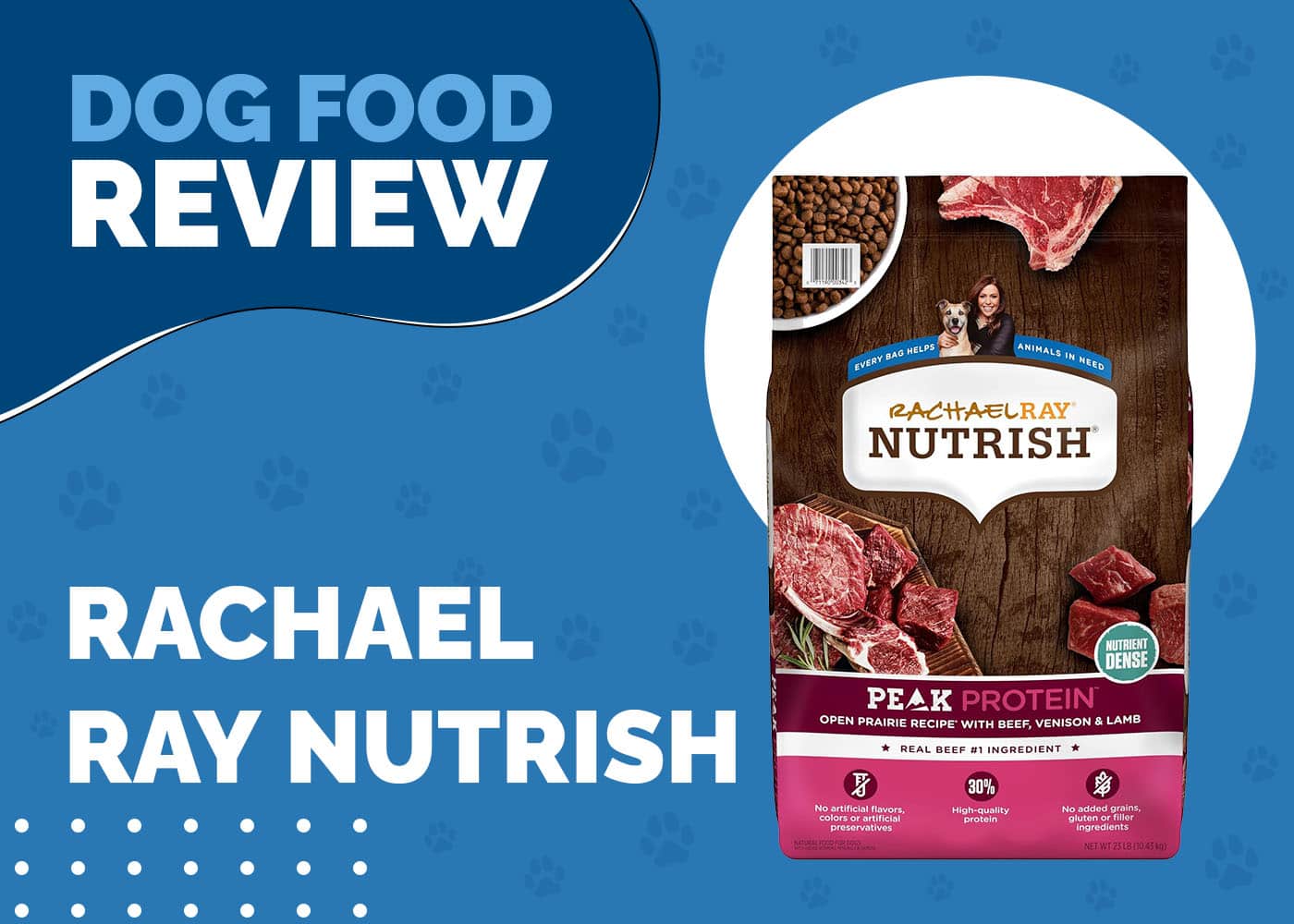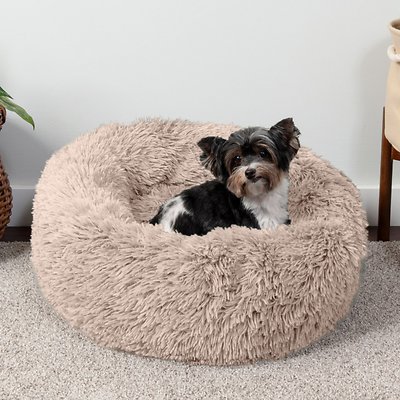How to Calm a Hyper Dog: 10 Proven Tips & Tricks
Updated on
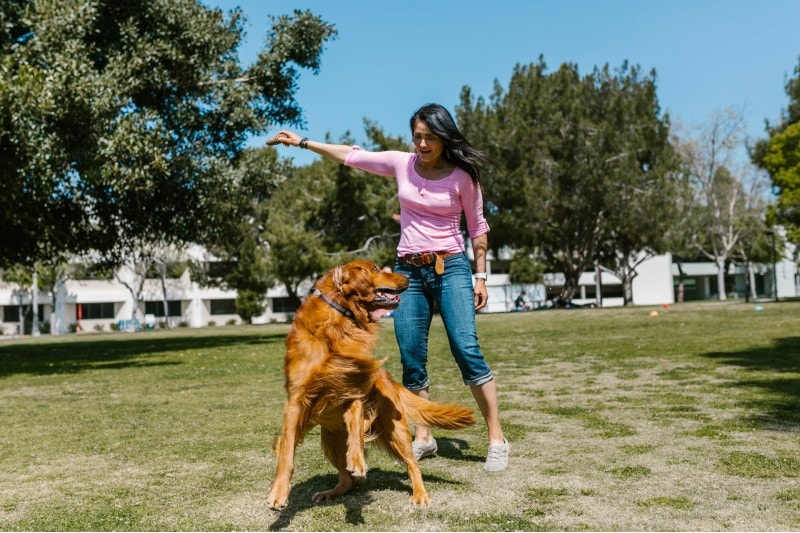
Does your dog jump on you, lick your face, or bite your clothes when you return home from work? While that’s cute, it can become a nuisance when your adorable pup starts doing it excessively. That’s mainly the case with hyper dogs.
In such situations, you shouldn’t respond in frustration and scold your pup for being too affectionate or energetic. Some dog breeds are just naturally like this, so they can’t help it. Many dogs also act hyperactive to get their parents’ attention—it doesn’t matter if it’s good or bad.
If you’re dealing with a super-active dog, know that hyperactivity can sometimes result from an underlying health issue. So, be gentle with your little friend and take them to a vet for examination.
Remember, hyperactivity isn’t always problematic. It keeps your pet happy and more fun to be around. But if this behavior is taking a toll on your peace, follow these 10 tips to calm a hyper dog without compromising their well-being:
The 10 Tips on How to Calm a Hyper Dog
1. Learn About Your Dog’s Breed
First, get on the internet and learn more about your puppy’s breed. Since some dogs are genetically energetic, you can’t possibly make them completely calm. But yes, you can train them to be less hyper and disciplined.
Some super energetic dog breeds are Border Collie, Siberian Husky, German Shepherd, Australian Shepherd, Labrador Retriever, and Jack Russell Terrier. These dogs can run and play all day long. They also don’t like walking on a leash as it restricts them from fully channeling their energy out.
If you have a dog with hyperactivity in their DNA, you must take them out in a dog park or a fenced yard for fetching and running. This should be included in their daily routine. If that’s impossible for you to manage, you can admit them to a doggie daycare to help your pup meet their mental and physical stimulation needs.
Exploring your pet’s breed will help you develop the most effective plan to manage their hyperactivity. You will see your furry friend happier and more well-behaved than before.
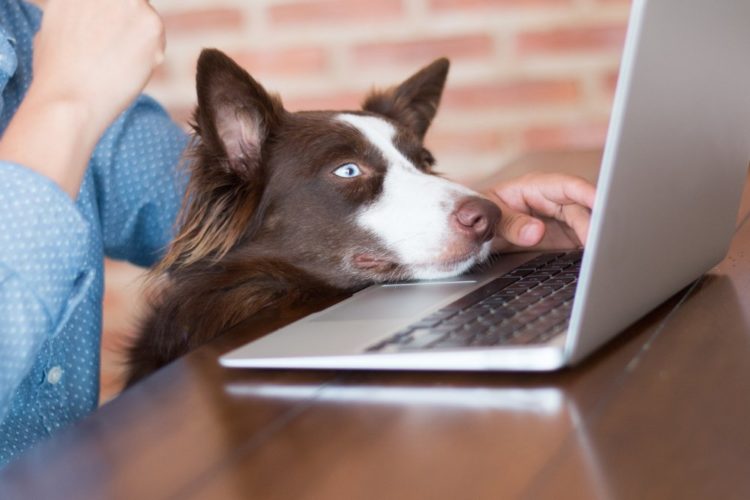
2. Take Them Out
If you spend most of your time away from home, it’s no excuse to deprive your dog of their playtime. Almost every breed requires proper mental and physical stimulation to stay active, healthy, and happy. So, as a responsible pet owner, you must dedicate an hour or so to taking your dog out for daily exercises or walk.
The easiest way to fulfill your dog’s exercise needs is to take them to a nearby dog-friendly beach or park. Your pet will freely channel their energy, splashing the waves or playing with other dogs. Since these places are specifically designated for dogs, your pup will have a chance to interact with other dogs and develop social skills.
In fact, some breeds love meeting and playing with other dogs. For instance, Poodles, one of the friendliest breeds, thoroughly enjoy spending time with other dogs.
3. Keep Them Busy
You now know that fulfilling your hyper dog’s physical and mental stimulation needs is the best way to keep them calm. While walking and playing sessions work for this purpose, what if you can’t be around them? How will your dog channel their high energy level into something good? The answer is interactive toys.
These toys require your pet’s full attention and engagement, keeping them busy and productive for hours. This way, they will be tired and calm when you return home.
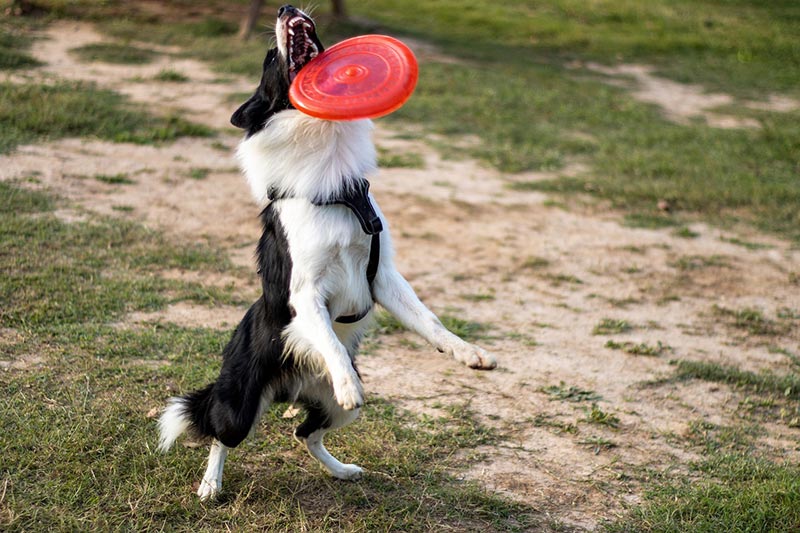
4. Invest in Quality Calming Dog Treats
A little trick and treat can also help you calm your hyper dog. The market is full of varying dog treats, but you can’t trust all of them. Some products may have attractive packaging, yet they are filled with lots of sugar and additives that can make your dog obese in no time. Even worse, consuming these products can lead to many health issues for your furry friend.
Therefore, look for calming dental chews or sticks made of quality, naturally-calming ingredients, such as chamomile, hemp, and Valerian root. These treats are not only healthy but super delicious. However, some dogs can be allergic to any component of these treats. So, always read the product’s packaging to ensure it contains no such ingredient. You should also consult a vet to get an expert’s recommendation.
5. Practice Crate Training
Many dog owners like to sleep and eat with their pups since they are their best friends. But sometimes, when you’re not actually in the mood, such displays of affection can irritate you. This can make your dog feel left out and even aggressive and hyperactive in the worst-case scenario.
To deal with such situations, it’s important to crate-train your dog. Experts believe that it makes your dog peaceful and keeps their energy levels at a minimum. However, the key is to invest in a quality crate with easy entry and exit points.
If your dog isn’t interested in crate training, you should try making their new home more comfortable. For instance, add a blanket, an orthopedic bed, and many toys to make the crate welcoming.
Start putting your dog in the crate multiple times a day when you are home. Then, do it before leaving home. This way, they won’t feel like the crate is their punishment. Keep extending the time slowly to help your pal adjust to their new home.
Whenever you return home, you will find them sitting in the crate, playing calmly with their toys. No more aggressive jumping and licking!
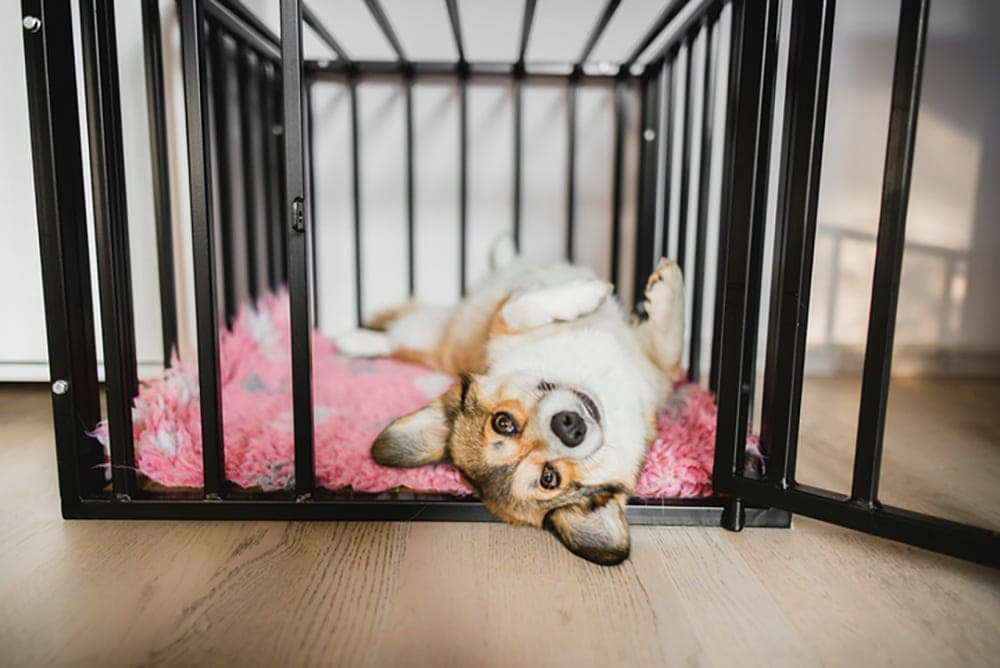
6. Set a Consistent Routine
You can set a consistent routine for your furry friend to help them manage their hyperactivity. With a fixed schedule, your pup will know they can’t do whatever they want. Instead, they must stick to a predictable routine every day.
Setting a routine is also a great way to make your pet disciplined.
- Wake up at 9 am and go to the bathroom
- Have breakfast to get the energy for the entire day
- Spend some time meditating or relaxing their nerves
- Take them for an outside walk
- Feed them lunch and take them to the bathroom if required
- Play with them in the backyard, primarily fetching
- Allow them some time to relax and watch Netflix with you
- Dinner time and final bathroom round
- Finally, bedtime!
This routine will divide your dog’s energy into different activities throughout the day. When they know the right time for playing and resting, they will likely be calmer and more relaxed.
7. Calm Them With Basic Commands
Another way to calm down a hyper dog is by teaching them basic commands through obedience training. It will help them learn to behave well, even when feeling super energetic. They must know when their parents are asking them to sit, stand up, stop barking, and come to them.
Remember, obedience training requires lots of effort from the owner’s side. You must act patiently and calmly, as the process is typically lengthy.
Your dog must also learn that they don’t have to jump over humans excitedly or bark at guests. They should also know how to walk on a leash without causing any trouble. A well-trained dog makes a parent’s life way easier, regardless of if they belong to a hyperactive breed.
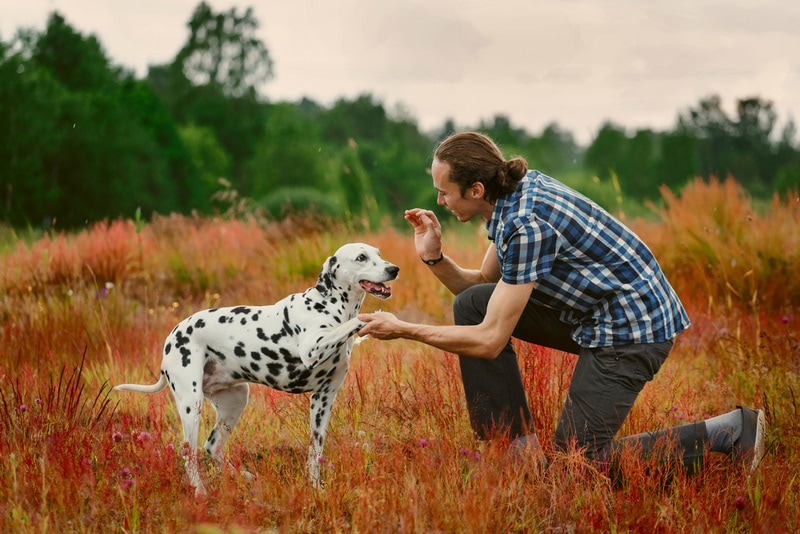
8. Invest in a Healthy Diet
Cost-saving is important, but it shouldn’t be your priority when shopping for dog foods for your furry friend. Only a few pet parents know that diet has a significant impact on a dog’s behavior, health, and mood.
In fact, a study found some connection between a dog’s hyperactivity and certain ingredients in their food. Unfortunately, many products in the market include sugar, coloring, additives, and fillers. So, research thoroughly and check the product’s packaging before buying it for your pal.
You can also consult a professional nutritionist or vet to develop a customized diet plan for your dog’s daily nutritional requirements. They will also recommend the best food brands for your furry friend.
9. Establish a Calm Home Environment
Let’s be honest; you can’t calm your hyperactive dog without having a peaceful environment in your home. Pets and children behave with the same energy they receive from their parents. If you’re chaotic and frustrated most of the time, your pup will try to complement your vibe by reacting the same way.
Most dog breeds like to follow the leader of their herd. Since you’re the leader at home, they will imitate the same way you behave. So, as a pet parent, set an example for your dog to help them learn how to control themselves and behave well, even with an intense adrenaline rush.
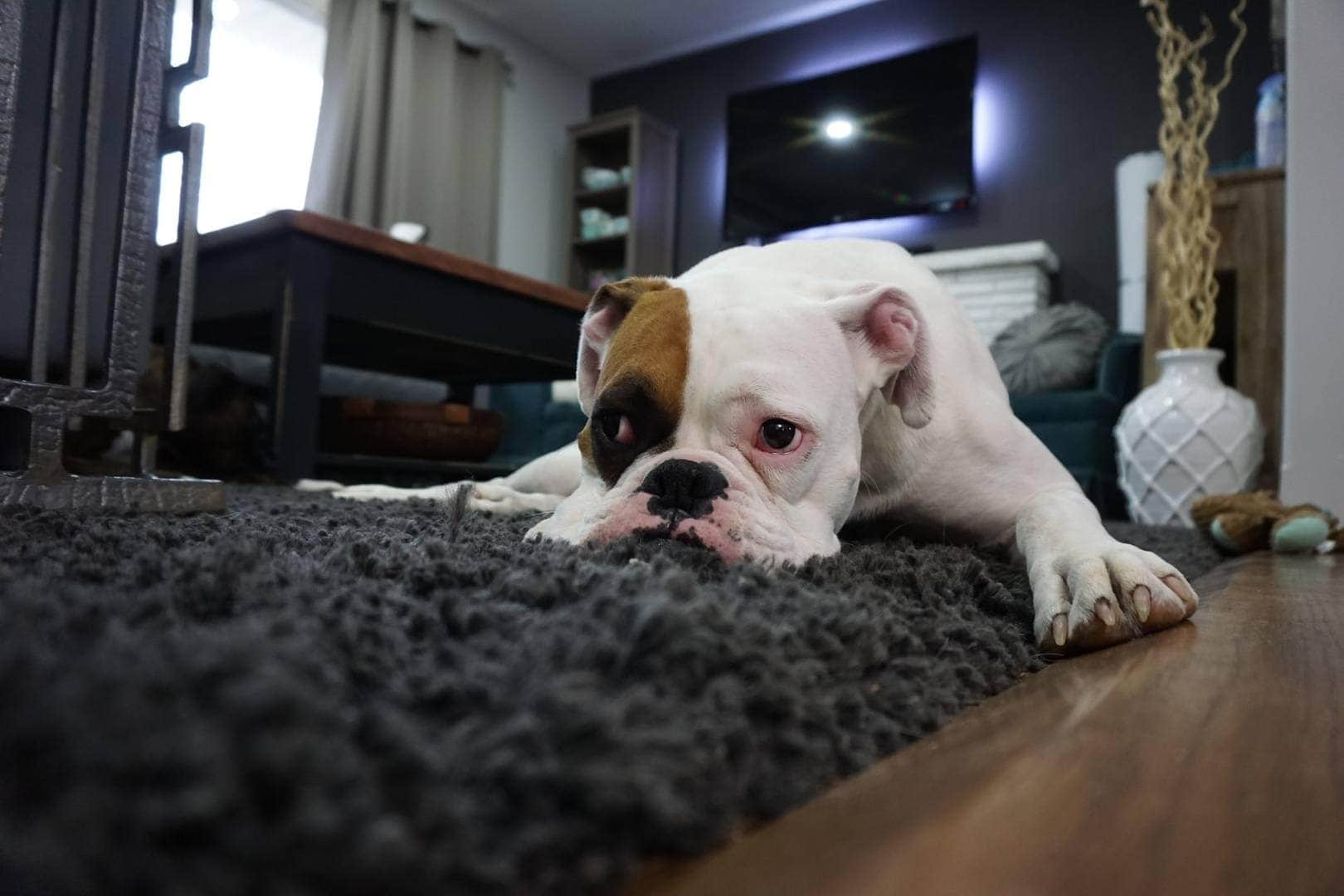
10. Set Timely Vet Visits
While hyperactivity is primarily a genetic or environmental factor, it can also indicate an underlying health issue. Some medical conditions can instantly increase your dog’s energy levels, making it hard for them to control themselves.
So, when you observe excessive hyperactivity in your dog on a daily basis, you must consider taking them to a vet for a medical examination. You can’t know if your dog is just being hyper or telling you about their discomfort—only a professional can find it out.
Frequent vet check-ups are also an excellent way to keep your furry friend happy and healthy for a long time.
Conclusion
Bringing a dog to your home is no less than a blessing. You get a companion who knows how to light up your mood after a tiring day at work. But sometimes, their hyperactivity and energetic nature become irritating, making you wonder how to calm your pup down.
You can relax your hyper dog in many ways. For example, you can crate-train them, take them out for regular walks and playing sessions, invest in quality dog food, set a consistent routine, and teach them basic commands.
With these tips, ensure to make frequent visits to your vet to keep your pet in optimal health.
Related reads:
- 5 Best Dog Treadmills – Reviews & Top Picks | Hepper
- 9 Best CBD Dog Treats & Chews – Reviews & Top Picks | Hepper
Featured Image Credit: RODNAE Productions, Pexels


